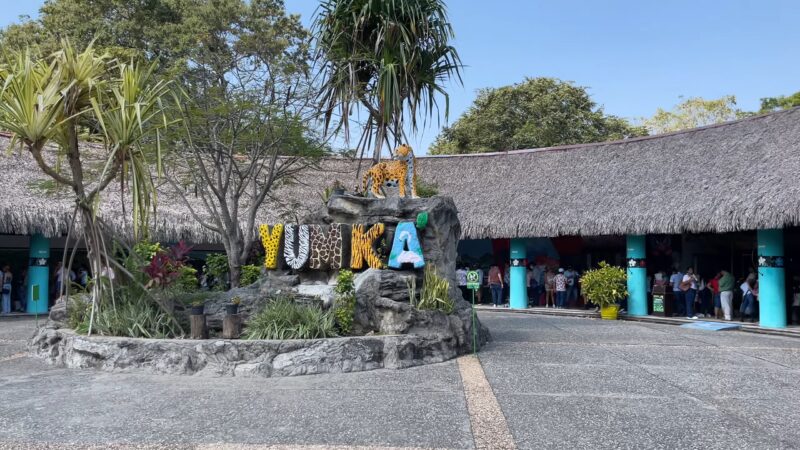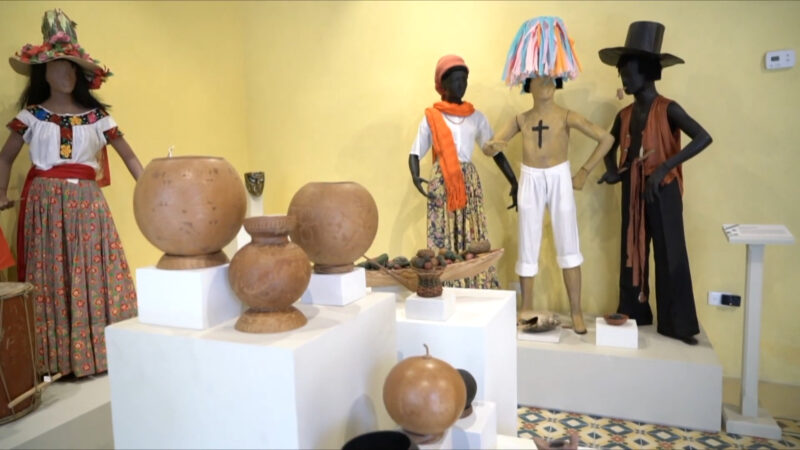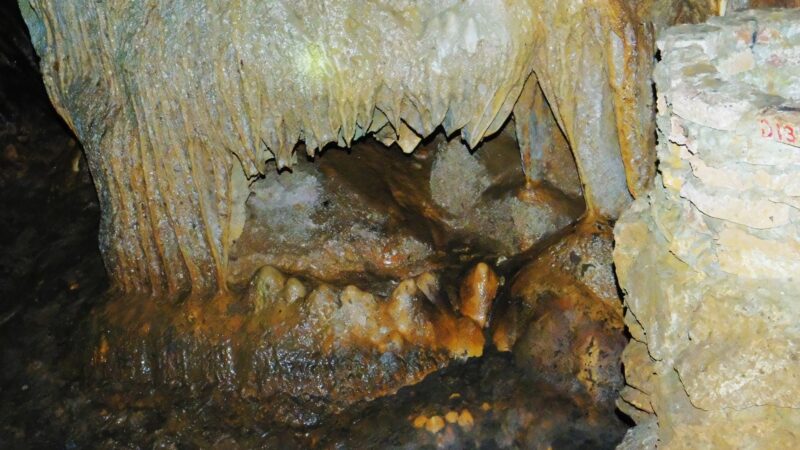Tabasco is a state in southeastern Mexico that offers a rich and diverse cultural and natural heritage. From ancient ruins to modern museums, from lush tropical forests to stunning waterfalls, Tabasco has something for everyone.
Whether you are looking for history, adventure, or relaxation, you will find it in Tabasco. Here are the 15 best places to visit in Tabasco in 2023.
1. La Venta Museum and Park
This park museum is one of the most popular attractions in Tabasco. It showcases the legacy of the Olmec civilization, which flourished in the region from 1200 to 400 BC.
The park features a collection of colossal stone heads, altars, stelae, and sculptures that were rescued from the archaeological site of La Venta, which was flooded by an oil company in the 1950s. The museum also displays artifacts, ceramics, and jewelry from the Olmec culture.
You can walk among the ancient monuments, admire the exotic flora and fauna, and learn about the history and culture of one of the oldest civilizations in Mesoamerica.
2. Yumká

If you love animals and nature, you will enjoy visiting Yumká, a zoo and ecological park that covers 101 hectares of land. Yumká means “the lord of the animals” in the Maya language, and the park lives up to its name by providing a natural habitat for more than 700 animals of 90 different species.
At the park, you can see all sorts of animals like lions, tigers, giraffes, zebras, monkeys, and crocodiles. They have big enclosures that look like their natural habitats.
The park also has a botanical garden, lake, aviary, and butterfly house for you to visit. Yumká offers guided tours, educational programs, and recreational activities for visitors of all ages.
3. Carlos Pellicer Cámara Regional Museum of Anthropology

Named after Carlos Pellicer Cámara, a celebrated poet and cultural advocate from Tabasco, this anthropology museum is located in a contemporary building that offers breathtaking views of the Grijalva River and La Venta Park. It houses a fascinating collection of Olmec, Maya, and Zoque artifacts, including pottery, jade, obsidian, and shells.
Visitors have the opportunity to immerse themselves in the rich heritage of these pre-Hispanic cultures. Aside from its permanent exhibits, the museum regularly features temporary showcases, cultural events, and interactive workshops.
It is the perfect destination for those interested in learning about Tabasco’s ancient cultures and developing an appreciation for the artistic and aesthetic values embodied in their creations. This museum is a truly exceptional place for exploration and education.
4. Tomás Garrido Canabal Park

Located in the northwest corner of Villahermosa, the capital city of Tabasco, this 56-hectare park is named after Tomás Garrido Canabal, a controversial politician and reformer who governed the region in the 1920s and 1930s. Among its numerous attractions are a zoo, an archaeological park, an art gallery, a planetarium, and a community space.
The park is also renowned for its stunning gardens, fountains, and sculptures. With its offerings of nature, culture, and recreation, the park is a beloved destination for both locals and tourists alike.
5. Comalcalco Archaeological Site
This archaeological site is the only one in Mesoamerica that was built with bricks instead of stone. Comalcalco was a Maya city that reached its peak between 600 and 900 AD.
Comalcalco, a unique and impressive example of Maya architecture and culture, is comprised of three main complexes: the Great Acropolis, the North Plaza, and the East Plaza. Within these complexes, visitors can explore various structures such as temples, palaces, pyramids, tombs, and sculptures, which provide insight into the religious, political, and social aspects of Maya life.
Additionally, Comalcalco features a museum showcasing a diverse collection of artifacts including bricks, ceramics, stucco, and other items. This allows visitors to further delve into the rich history and cultural significance of the site.
6. Tabasco History Museum
Situated in the Casa de los Azulejos, a colonial mansion originating from the 18th century, lies the museum of history. The House of Tiles earns its name from the striking blue and white tiles adorning its facade.
Throughout its history, the house has been owned by notable families and individuals including José María Pino Suárez, a former vice president of Mexico who met his tragic demise in 1913. Within the museum, an assortment of local historical artifacts awaits, ranging from documents and photographs to paintings, furniture, and clothing.
Moreover, the museum takes great pride in showcasing the mesmerizing architectural and artistic beauty of the house itself, a distinction that has been officially recognized with national monument status.
7. The Agua Selva Ecological Reserve
This eco-park, situated in the Sierra region of Tabasco, serves as a sanctuary for preserving the diverse range of flora and fauna as well as safeguarding the region’s water resources. Encompassing an extensive area of 2,500 hectares, the park showcases various ecosystems including rainforest, wetland, and savanna.
With over 300 species of plants and animals, the park boasts an exceptional level of diversity. Visitors to the park can enjoy a multitude of activities, including hiking, camping, birdwatching, kayaking, and zip-lining.
The park provides an array of convenient amenities, such as a museum, restaurant, and souvenir shop.
8. Villa Luz Natural Park
This natural park can be found in the municipality of Tapijulapa, a delightful town designated by the Mexican government as a “Magic Town” due to its cultural and natural attractions. Among its notable features are its waterfalls, particularly the renowned Villaluz waterfalls, also known as the “Rainbow Waterfall” for the mesmerizing colors it reflects when sunlight touches the water.
Additionally, the park is home to other captivating waterfalls, such as the Cascada de la Cueva, Cascada de la Media Luna, and Cascada de la Piedra Volada. It offers an exceptional opportunity to appreciate the splendor and rejuvenation of nature and provides a perfect setting for swimming.
9. Agua Blanca Waterfalls
Tabasco is a state that offers a diverse range of attractions for visitors. One of these attractions is the Agua Blanca Waterfalls, located in the municipality of Macuspana.
Situated about 60 km from Villahermosa, these waterfalls are formed by the Agua Blanca River, which descends from the Sierra Madre de Chiapas. With their different heights and shapes, the waterfalls provide spectacular scenery surrounded by clear and refreshing water, lush vegetation, and wildlife.
Visitors can engage in various activities such as swimming, hiking, picnicking, and camping. Additionally, a visit to the nearby community of Agua Blanca allows for an exploration of local culture and traditions.
10. Illusion Lagoon
Another noteworthy natural attraction in Villahermosa is the Illusion Lagoon. This lagoon, covering an area of 6.5 km2, is renowned for its connection to the Grijalva River.
Visitors will be captivated by the diverse flora and fauna found within the lagoon, including water lilies, mangroves, herons, ducks, turtles, and crocodiles. Taking a boat ride on the lagoon provides an opportunity to soak in the breathtaking views of the city and the park.
Adjacent to the lagoon lies the Museo de la Cultura Popular, where folk art and crafts from Tabasco are exhibited.
11. Pomoná Archeological Zone

The Pomoná Archeological Zone in the municipality of Tenosique is an archaeological site located near the border with Guatemala. Flourishing between 600 and 900 AD, Pomoná was once a vibrant Maya city.
The site boasts various structures such as pyramids, palaces, ball courts, and stelae. Noteworthy are the well-preserved sculptures and inscriptions that offer insights into the city’s history and dynastic lineage.
A museum within the site showcases a collection of ceramics, jade, obsidian, and other artifacts, making Pomoná a hidden gem of Maya archaeology and culture.
12. Pantanos de Centla Biosphere Reserve
For those seeking a journey into nature, the Pantanos de Centla Biosphere Reserve is a must-visit. This biosphere reserve, located where the Grijalva and Usumacinta rivers converge, covers an extensive area of 3,000 km2, making it the largest wetland in Mexico.
Boasting remarkable biodiversity, the reserve is home to over 500 species of plants and 300 species of animals, including manatees, dolphins, crocodiles, jaguars, monkeys, and various birds. Additionally, the reserve plays a crucial role in preserving the cultural and ecological values of the Chontal people, offering visitors a chance to immerse themselves in the natural beauty and cultural richness of the reserve.
13. Villahermosa Cathedral

One of the main religious buildings in Villahermosa is the Villahermosa Cathedral or Catedral del Señor de Tabasco in Spanish. Constructed in the 18th century, this neoclassical cathedral is dedicated to the veneration of the Lord of Tabasco, a wooden image of Christ.
The cathedral’s significance is highlighted by its status as the seat of the Diocese of Tabasco. Visitors can admire religious art and objects within the cathedral’s museum, making it a symbol of faith and identity for the people of Tabasco.
14. Papagayo Interactive Museum
The Papagayo Interactive Museum, located in Tomás Garrido Canabal Park, is an interactive museum designed for children and families. With 10 thematic rooms dedicated to science, art, technology, ecology, and culture, visitors can engage in a fun and educational experience.
Furthermore, the museum features a planetarium, library, and playground, providing a space for learning, playing, and enjoyment.
15. Cocona Caves

Cocona Caves, situated in the municipality of Teapa, approximately 80 km from Villahermosa, is an impressive cave system formed by the erosion of limestone rocks by the Coconá River. Extending for 2 km and reaching a depth of 40 m, the caves showcase remarkable formations of stalactites, stalagmites, columns, and curtains.
In addition, a natural pool within the caves offers a refreshing swimming experience, allowing visitors to explore the caves’ beauty and mystery.
FAQ
How can I get to Tabasco from other parts of Mexico?
Tabasco has an international airport in Villahermosa, which connects with other major cities in Mexico, such as Mexico City, Guadalajara, Monterrey, Cancun, and Merida. You can also travel by bus or car, using the federal highways that link Tabasco with other states.
What is the best time of the year to visit?
Tabasco has a tropical climate, with high temperatures and humidity throughout the year. The rainy season lasts from June to October, and the dry season from November to May. The best time to visit Tabasco depends on your preferences and activities, but generally, the months of December to March are considered the most pleasant and comfortable.
What are some of the typical dishes and drinks?
Tabasco has a rich and varied gastronomy, influenced by its indigenous, colonial, and Caribbean heritage. Some of the typical dishes are pejelagarto asado (grilled fish), chanchamitos (corn dough stuffed with pork and cheese), torta de plátano (plantain cake), and dulce de papaya (papaya candy). Some of the typical drinks are pozol (fermented corn drink), horchata (rice drink), and chocolate (cacao drink).
What are some of the cultural and artistic expressions of the region?
Tabasco has a vibrant and diverse cultural and artistic scene, reflecting its history and identity. Some of the cultural and artistic expressions are the danza del pochó (a dance that mocks the Spanish conquerors), the música de marimba (a music played with wooden xylophones), the artesanía de jícara (a craft made with gourds), and the literatura tabasqueña (a literature that includes poets, novelists, and essayists).
What are some of the safety and health tips for visiting Tabasco?
Tabasco is a relatively safe and friendly state, but as with any destination, you should take some precautions and follow some tips. For example, you should avoid traveling alone at night, carry only the necessary cash and documents, drink bottled water, use insect repellent, and wear sunscreen and hat.
What are some of the ecotourism and adventure options in Tabasco?
Tabasco has a lot of ecotourism and adventure options, thanks to its natural and cultural diversity. You can explore its rivers, lagoons, waterfalls, caves, and forests, and enjoy activities such as rafting, kayaking, fishing, hiking, rappelling, zip-lining, and camping. You can also visit its communities and learn about their traditions and customs.
Final Words
To sum it up, Tabasco offers a diverse array of attractions that cater to different interests. From ancient archaeological sites to breathtaking natural landscapes, from religious and cultural landmarks to engaging and educational experiences, and even a chance to explore the fascinating history and production of cacao, there is something for everyone to enjoy and be captivated by in Tabasco.

